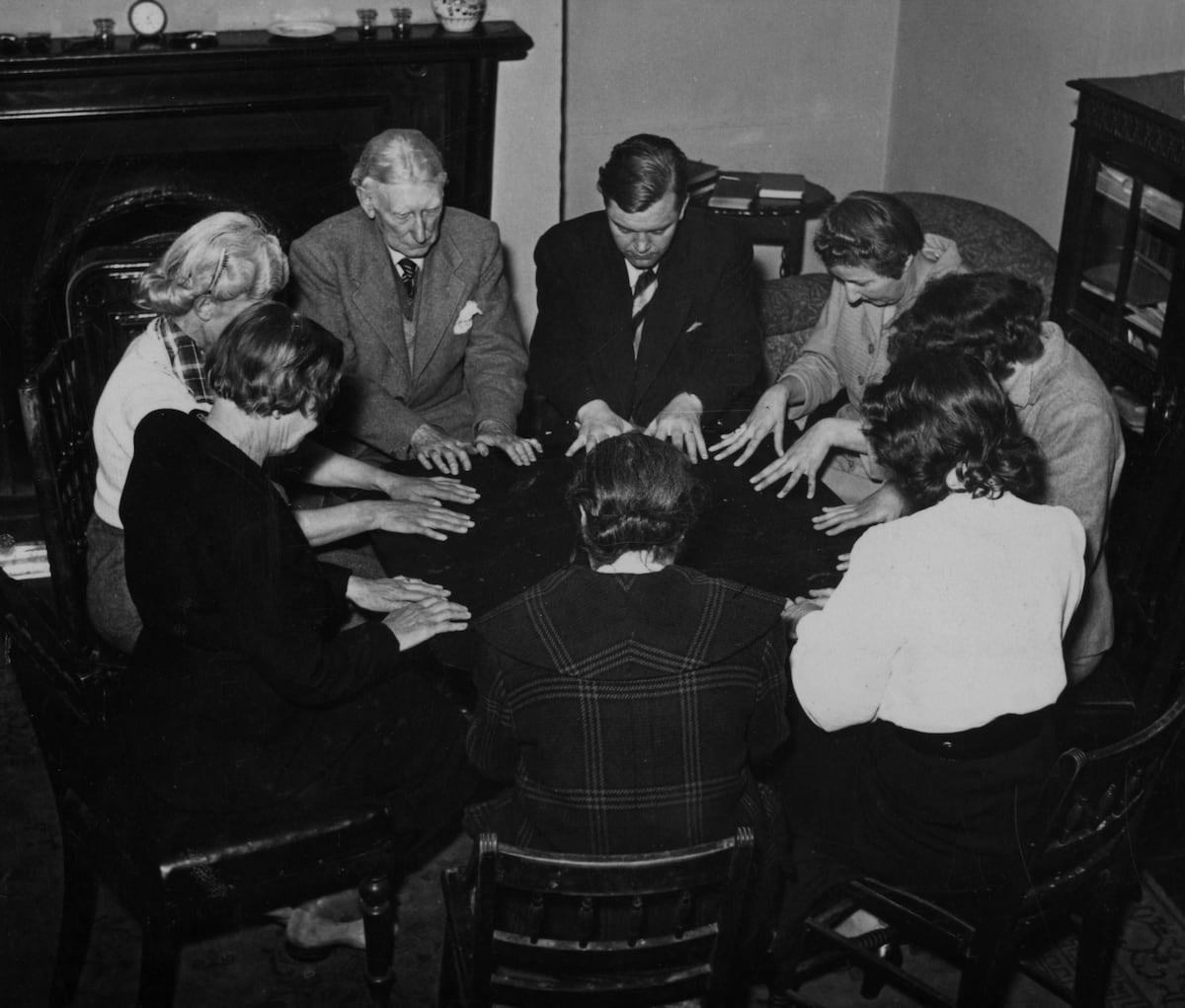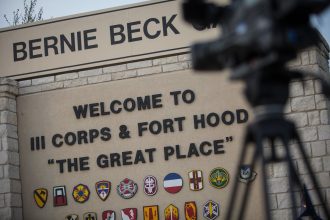This article is republished from The Conversation under a Creative Commons license. Read the original article here. The Conversation is an independent and nonprofit source of news, analysis and commentary from academic experts.
In March 1915, a young British man named Raymond Lodge was deployed to Ypres, France, to fight on the front lines of the first world war. By September, he was dead, aged just 26.
A few weeks later, however, Raymond got in touch with his family. “TELL FATHER I HAVE MET SOME FRIENDS OF HIS”, came the message hastily scrawled in all caps by the spiritualist medium Mrs. Osborne Leonard.
Raymond’s father was Sir Oliver Lodge, a prominent physicist whose work helped to develop radio communications. Sir Oliver was also a member of the Society for Psychical Research, an organisation which, among other things, investigated ghosts. The “friends” Raymond had apparently met beyond the grave included F.W.H. Myers, a founding member of the society, who had died in 1901.
Sir Oliver, previously fairly sceptical, was soon drawn into lengthy séances with Mrs. Leonard, poring over messages allegedly from Raymond about death and the afterlife. He compiled them into a book entitled “Raymond, or Life and Death,” which was published in 1916. It proved so popular that it ran to many editions, with soldiers on the front being sent copies by their loved ones.
Spiritualism began in the late 1840s as a pseudo-Christian practice that believed communication with the dead was entirely possible. While it dwindled in popularity at the turn of the century, it was reinvigorated to new levels in the aftermath of the first world war. The popularity of Lodge’s book, moreover, led to dozens of copycat publications, where other soldiers “wrote” of their experiences of the utopian spiritualist afterlife to their families.
“Claude’s Book” (1919) is one such example, “transcribed” from séances with young Claude by his mother, L. Kelway-Bamber. Kelway-Bamber, having been so heartened by Sir Oliver’s sittings, had hired Mrs. Leonard herself to get in touch with her son. Spiritualist mediums were in high demand once more.
Beyond the cynicism
It’s easy to dismiss these séances, even to scoff at them as nothing more than charlatans exploiting public grief, especially from the point of view of modern scepticism. When I was researching my new book, “Ghosted: A History of Ghost Hunting and Why We Keep Looking,” this was my initial reaction to reading about these bizarre encounters with the spirits of the dead.
But as a sociological phenomenon, borne of mass grief, I think it’s more complicated than that. We may laugh at fraudulent mediums quivering melodramatically as they channel the so-called spirits of the dead, but to discuss spiritualism’s cultural significance requires a more nuanced and sensitive approach.
By the end of the first world war, nearly 9 million soldiers had been killed. General mortality rates were already high prior to the war, and people were no strangers to sudden, unexpected bereavement. But never before had death affected so many people at once, and taken so many young men in the prime of their life.
If we look at spiritualism in the aftermath of the first world war, not to identify fraud and shun its believers as being gullible, we can build up an incredibly detailed picture of why so many clung to séance tables in the hope of contacting their loved ones again.
Everyone’s loss of their son, brother or husband was uniquely painful, and yet these deaths lost their significance when half the families on the street had also lost their young men. Yet, suddenly, everyone knew Raymond Lodge’s name. He stood out among the legions of dead Tommies, because of the séances Sir Oliver held with Mrs. Leonard.
This, I think, is why so many grieving families took up spiritualism and wrote their own books — not to piggyback on Raymond’s popularity, but to make their sons, brothers and husbands seem special, too. Moreover, many didn’t know exactly what had happened to soldiers; being able to “speak” to them from beyond the grave made it seem like they were happy and at peace, enjoying themselves in the afterlife, and not in pieces in a muddy ditch thousands of miles from home.
Mary Lodge, Raymond’s mother, sums up the problem with a brief sentence her husband includes in the book: “We can face Christmas now.” We can accuse Mrs. Leonard of exploiting grief, but we can’t deny that it eased the suffering of many, regardless of the ethical and moral dilemmas posed by spiritualism.
The history of ghost-hunting and séances is rife with fraud, and scepticism is often required to read around anecdotes to uncover what was really happening, but it’s also a vital resource to help us understand grief and fear of death at certain points in human history. By examining the motivation behind ghost-hunting from a more sympathetic perspective, we can learn a great deal about what it means to be alive.
Alice Vernon is a lecturer in Creative Writing and 19th-Century Literature at Aberystwyth University.
Read the full article here








